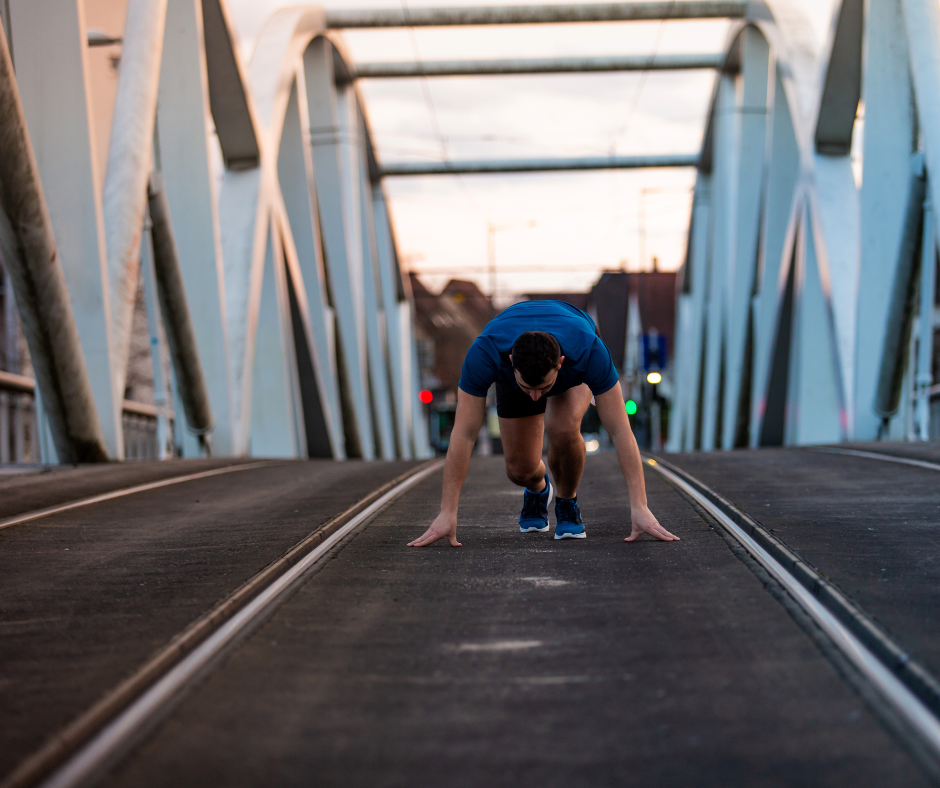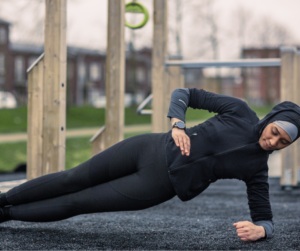For athletes, the effects of fasting throughout Ramadan aren’t taken lightly. Training during this time comes with massive challenges and if they do not adjust their training to allow extra rest but still maintain their level of fitness they will do more damage than they think.
The athletes that train during Ramadan can’t afford a 30-day complete break but they can afford to lower their training intensity and volume. With that being said, no one should be completely inactive during Ramadan, it’s recommended that some form of movement should be done at least 3 times a week to keep healthy mentally and physically.
Here’s what two running athletes had to say about what they wish they knew before they started training during Ramadan…

What These Athletes Wish They Knew Before Training During Ramadan
Athlete number 1…
I wish I had a diet to follow from the get-go that explained exactly what I need to eat and when.”
Athletes need to consume foods that are slowly releasing and they need to stick to the things that work for their bodies.
Here at Coach Parry, we encourage those who observe Ramadan to do either moderate training BEFORE their final meal and drink in the morning or AFTER their initial light evening meal and drink BEFORE their bigger meal later on.
The type of foods those observing Ramadan should eat when they break the fast include:
Iftar
- Most traditional dishes served at iftar are good sources of carbohydrates (like figs) and high-quality proteins (e.g. milk).
- When the exercise is planned just before iftar, these dishes can be consumed as post-exercise recovery snacks and may be followed by another training session and another meal.
- High-quality proteins are necessary for recovery after resistance sessions and must be part of the iftar meal or snack.
- You should take advantage of the possibility of drinking and eating during exercise performed after sunset. This will enhance your performance during training and will also contribute to achieving your nutritional goals.
- Sports foods, such as energy gels, drinks, and bars, are nutritious concentrates that are easy to ingest in these situations.
Suhoor (Pre-dawn meal)
- Eat as close as possible to sunrise and choose foods that contribute to sports nutrition needs for the day
- Base the meal on carbohydrate sources such as starches and fruits or dried fruits
- Include protein sources with a slow release
- Include food rich in water such as fruit juice, milk, smoothies, and fresh fruit
- Support needs for performance and recovery
Examples of meals that can be eaten when breaking the fast:
At least one hour before starting training, favor easily digestible food such as…
- Cereal bar
- Slice of gingerbread
- Rusk
- Fruit puree
- Plain yogurt
- Many common foods associated with Iftar are rich in carbohydrates (e.g. figs/dates) and high-quality protein (milk and laban yogurt).
- The substantial meal after prayers typically features savory dishes with carbohydrate-rich components (rice) and protein (meat or fish)
- Arab breads and other varieties provide worthwhile amounts of carbohydrates.
- Other combinations of carbohydrates and protein include Thareed (bread containing), starch pudding (milk), and rice porridge.
- Care should be taken with Ramadan treats, since many are very high in fat. Some recipes can be adapted to promote carbohydrate content and reduce fat (e.g. replace puff pastry in Um Ali with bread).
- Ma’amoul, dried fruits, and nuts are suitable snacks.
- When eating opportunities are limited, drinks with high energy/nutrient density can be useful to meet high-energy requirements. These include special nutrient feeds used in clinical nutrition situations, liquid meal supplements, and fruit/milk smoothies.
- Many of the special Ramadan drinks (e.g. Jellab) are energy-rich and those based on milk/laban also provide high-quality protein.
- Sohoor meals that are high in carbohydrates include rice with egg, cheese, and milk. Beans and foul while good sources of many nutrients may not be suitable if consumed close to a training session.
I also wish I knew how hard I was allowed to run before I ran too hard and had to reap the consequences…”
I had to figure out what works best for my body through trial and error, but a guide would have been extremely helpful.”
You should take note of your current level of fitness and aim to maintain it or even drop slightly in the beginning while your body adjusts to the fasting. Consider just maintaining your current level (or even dropping slightly for a few weeks) rather than pushing to improve.
Training during Ramadan should be done cautiously and the most important factor is to always listen to how your body is feeling.
If you haven’t been training in the build-up to Ramadan then we recommend opting for very light-intensity exercises such as going for walks and some beginner strength classes.
Here at Coach Parry, we’re massive advocates of strength training. We’ve put together this free strength training plan for runners that you can do once a week, at home and with no expensive equipment needed. You can access it by clicking here.
If you have been training before Ramadan then your goal for the 30 days should be to maintain the level of fitness that you have, rather than trying to increase fitness levels. That means reducing your current training intensity and volume on your current training program while placing high importance on what you consume when breaking the fast.

It is advised to follow a training program like the ones on offer here, these have been created with your specific needs in mind.
Once you’ve selected a training plan from our extensive library and applied it to your calendar, you are then able to open it in your training schedule. On the web-based app, you can drag and drop training sessions to better suit your week’s schedule.
You are also able to sync your training schedule with your fitness device through Strava or Garmin Connect. This will automatically pull your training data into the Coach Parry Online Training Club so that you are easily able to analyze your training and training load over time.
In the Coach Parry Online Training Club, you can track and analyze your training volume as well as your heart rate. Cadence and power are also tracked which means the Coach Parry coaches can give you accurate advice, backed by scientific data on your training to ensure you are moving forward as safely as possible.
SAFE & EFFECTIVE Training During Ramadan: A Comprehensive Guide
Athlete number 2…
I wish I knew how strong my mind is right from the start.”
A lot of people look at us (those who choose to continue training during Ramadan) as if we are crazy! I eventually stopped listening to those people and decided to train last year and it was amazing. I realize I could have been doing it every year!”
Anything is possible during Ramadan as long as you turn your intensity down a notch and stay in tune with your body and how it is feeling.
Always remember that everyone will have different responses to fasting so listen to your body and adjust accordingly.
Take into consideration…
- Your energy levels when you wake up in the morning
- Your energy levels when you go to sleep at night
- How do you feel doing your normal daily tasks
- Your length and quality of sleep
- How your training sessions are going
- Your mood and emotional state
You need to remove high-intensity workouts and moderate the volume of your runs.
Starting with lower-intensity and shorter-duration workouts, and gradually building up as the body adapts to the changes of fasting is what we recommend.
The most important thing to remember is that not everyone will react the same to their fasting and that’s why you need to start at a low intensity and see how your body reacts.
You will change your eating habits, sleeping patterns, and daily routine. These changes can affect your physical and mental health; therefore, it’s important to look after your mind and body during this period.
Overall, the balance of evidence suggests that from a general health perspective, there are no major health issues following Ramadan and there may even be health advantages.
The health benefits of intermittent fasting have been associated with positive changes in hormonal responses, oxidative stress, and inflammation.
By hydrating adequately when possible, consuming nutritious meals when breaking the fast, by reducing your training intensity and volume, and by listening to your body’s needs, one can maintain their running fitness throughout the month of Ramadan safely and sustainably.



Comments are closed.